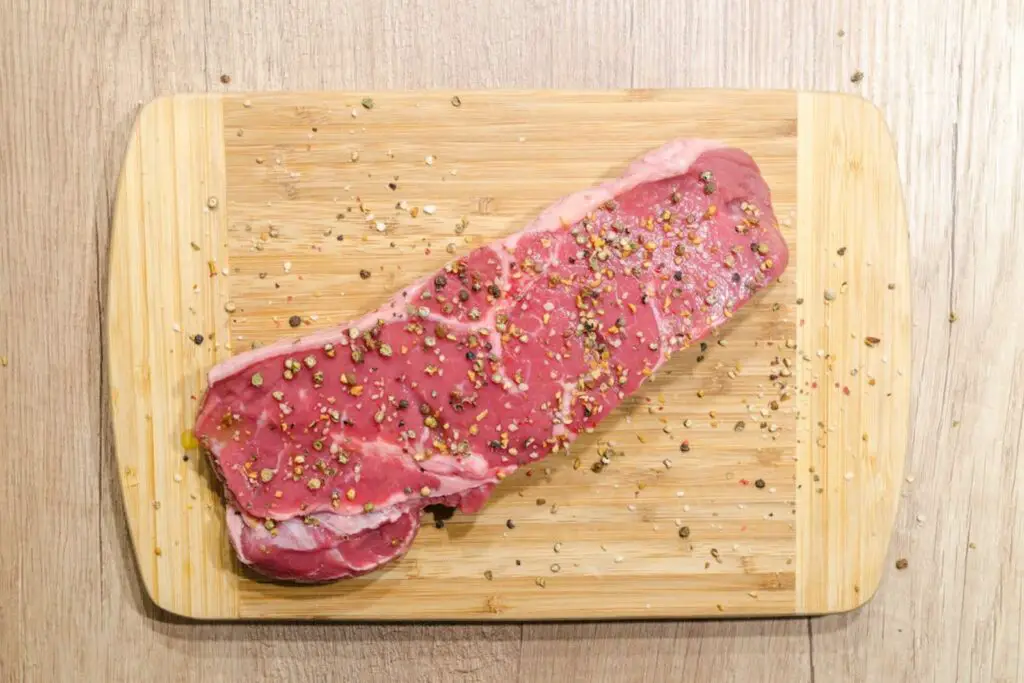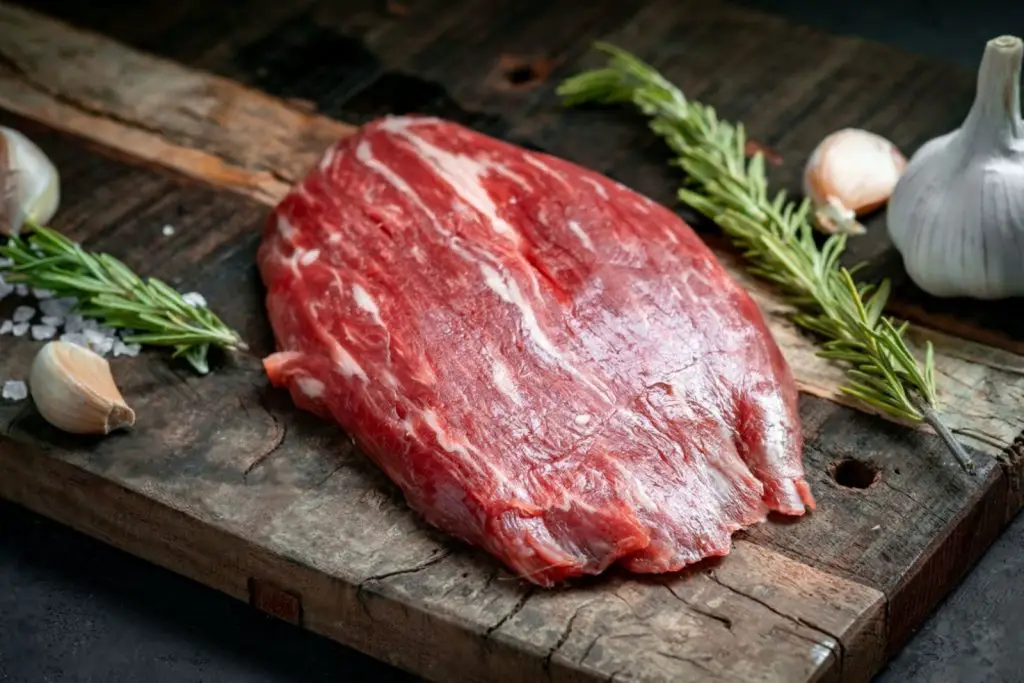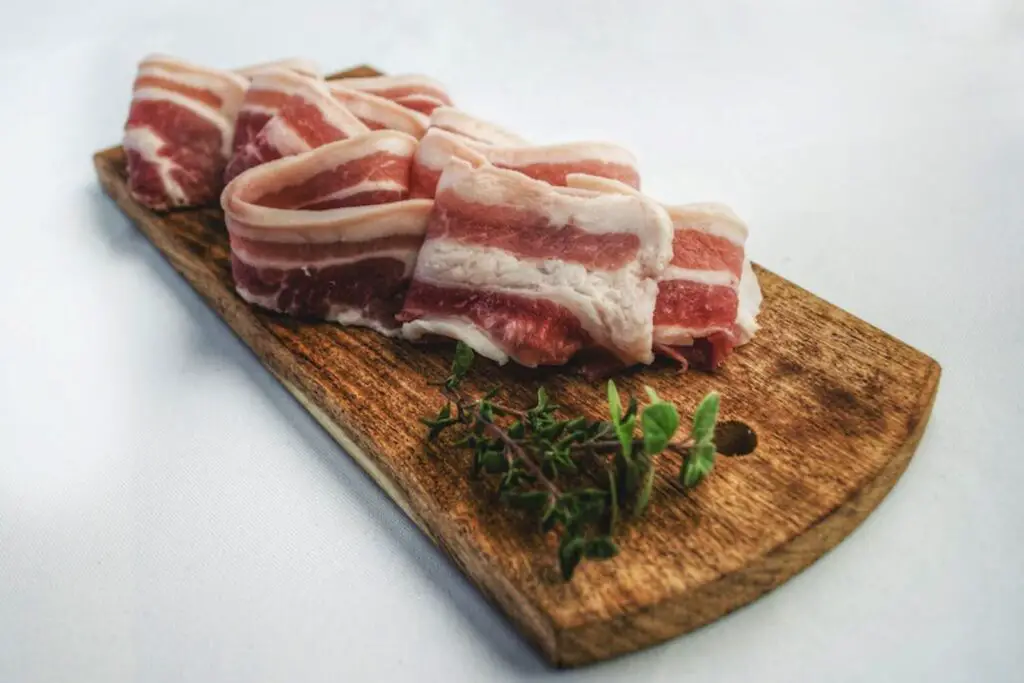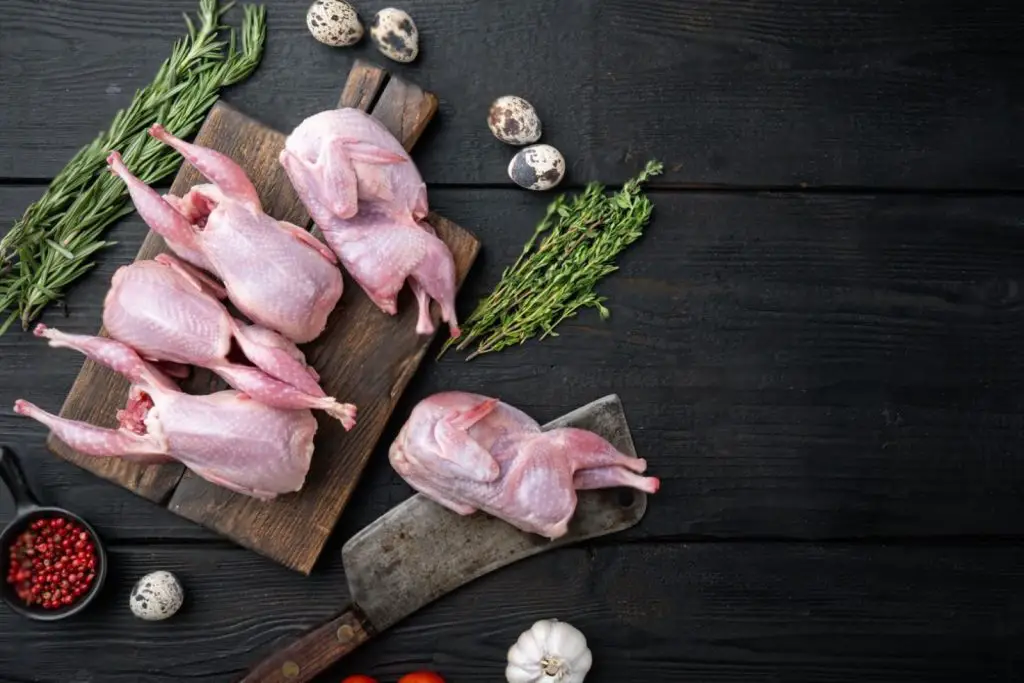
Pork belly, the succulent and flavorful cut of meat, is renowned for its rich taste and melt-in-your-mouth texture. Whether braised, roasted, or grilled, pork belly offers a mouthwatering experience that is beloved by meat enthusiasts and culinary connoisseurs alike. With its layers of tender meat and luscious fat, pork belly is a versatile ingredient that can be used in a variety of dishes, from hearty stews to crispy bacon strips.
To maximize its shelf life and have it readily available for future culinary adventures, freezing pork belly can be a practical option. Freezing pork belly not only helps preserve its taste and texture but also ensures that you can enjoy this delectable cut of meat whenever you desire, whether it’s for a slow-cooked delicacy or a sizzling indulgence. In this guide, we will explore the best methods for freezing pork belly, providing you with a convenient and flavorful ingredient to elevate your recipes and relish the delights of pork belly at your convenience.
Here are the steps to freeze pork belly:
Step 1: Prepare the pork belly
Before freezing pork belly, it’s crucial to prepare it properly to ensure the best results when you eventually cook or use it. Here’s a breakdown of the steps involved:
- Trimming excess fat or skin: Begin by examining the pork belly and removing any excessive fat or skin. While pork belly is known for its deliciously rich and fatty flavor, trimming excess fat can help prevent the meat from becoming overly greasy when cooked or thawed. Use a sharp knife to carefully remove any unwanted portions while ensuring you maintain an even thickness throughout.
- Leave a thin layer of fat (optional): While trimming, you may choose to leave a thin layer of fat on the pork belly for added flavor. This layer can enhance the taste and texture of the meat during cooking. However, the decision to keep or remove fat is entirely up to your personal preference and dietary considerations.
- Clean the pork belly: After trimming, rinse the pork belly under cold running water to remove any debris or surface impurities. Pat it dry thoroughly using paper towels or a clean cloth. Ensuring the pork belly is clean before freezing helps prevent any contamination or off flavors from developing during storage.
- Avoid marinades or seasonings: It’s important to freeze the pork belly without any marinades or seasonings. Freezing with marinades can alter the meat’s texture and taste, and the flavors may intensify or become uneven during freezing and thawing. By freezing the pork belly in its natural state, you have more flexibility when it comes to seasoning and marinating it later on.
Step 2: Cut into desired portions
When freezing pork belly, you have the option to freeze the entire piece or portion it into smaller sizes. Cutting it into individual portions offers several advantages and ensures convenience when you’re ready to use the frozen meat. Here’s why it’s beneficial to cut the pork belly into desired portions:
- Easy thawing and portion control: By dividing the pork belly into smaller portions before freezing, you can easily thaw only the amount you need for a particular meal. This prevents wastage and allows you to control portion sizes according to your family’s preferences or recipe requirements.
- Faster thawing and cooking times: Smaller portions of pork belly thaw more quickly than a large, solid piece. This means you can enjoy your meal sooner since the meat will defrost more rapidly. Additionally, smaller portions cook more evenly and efficiently, ensuring that the pork belly is perfectly cooked throughout.
- Versatile use: Portioning the pork belly allows for greater versatility in using it for various recipes. Whether you’re planning to make braised pork belly, stir-fries, or crispy pork belly, having smaller portions readily available gives you flexibility in choosing different cooking methods and flavors.
- Reduced waste: If you typically don’t use an entire pork belly in one sitting, cutting it into portions minimizes waste. You can freeze the remaining portions individually, ensuring that none of the meat goes to waste and preserving its quality for future use.
Consider the size of your family or the number of people you typically cook for when deciding on portion sizes. Smaller households may prefer smaller portions to avoid excessive leftovers, while larger families or those who frequently entertain guests might opt for slightly larger portions. Additionally, take into account the specific recipes you enjoy and the quantities required to achieve the desired results.
Step 3: Wrap each portion tightly
After cutting the pork belly into desired portions, the next step is to wrap each portion tightly in plastic wrap. Ensuring proper wrapping is crucial to preserve the quality of the pork belly during freezing. Here’s why this step is essential:
- Protection against freezer burn: Freezer burn occurs when food is exposed to air in the freezer, leading to dehydration and the development of unappetizing textures and flavors. Wrapping each portion of pork belly tightly in plastic wrap creates a protective barrier that prevents air from reaching the meat’s surface. This significantly reduces the risk of freezer burn and helps maintain the pork belly’s quality over time.
- Maintaining moisture and texture: The plastic wrap forms an airtight seal around the pork belly, helping to retain its natural moisture content. This is important because moisture loss can result in dry and tough meat once thawed and cooked. By tightly wrapping each portion, you help preserve the succulence and tenderness of the pork belly, ensuring a satisfying eating experience.
- Preventing cross-contamination: Wrapping each portion separately in plastic wrap prevents cross-contamination between different pieces of pork belly. This is particularly important if you plan to use the frozen portions individually over an extended period. The individual wrapping ensures that the flavors and potential bacteria from one portion do not transfer to another, maintaining food safety and integrity.
- Easy identification and organization: Tightly wrapping each portion in plastic wrap allows for easy identification when you’re searching for a specific piece of pork belly in the freezer. You can also label the plastic wrap with the cut of meat, date of freezing, or any other relevant information. This helps you keep track of your frozen pork belly inventory and use the oldest portions first for optimal freshness.
Step 4: Double wrap with aluminum foil
Once you have tightly wrapped each portion of pork belly in plastic wrap, the next step is to double wrap it with aluminum foil. This additional layer of protection offers several benefits in preserving the quality of the pork belly during freezing. Here’s why double wrapping with aluminum foil is important:
- Enhanced insulation against freezer burn: While plastic wrap provides a good barrier against air, adding a layer of aluminum foil provides extra insulation. Aluminum foil is resistant to moisture, odors, and light, further reducing the risk of freezer burn and maintaining the pork belly’s texture and flavor over an extended period.
- Increased durability and puncture resistance: Aluminum foil is sturdier than plastic wrap, providing an additional layer of protection against potential punctures or tears. This is particularly useful when handling frozen food in the freezer, where sharp edges or other items may accidentally come into contact with the pork belly packages. The foil acts as a shield, minimizing the chances of damage that could compromise the meat’s quality.
- Preservation of moisture and flavor: The double wrapping with aluminum foil helps seal in the natural moisture and flavors of the pork belly. It acts as a barrier against moisture loss, preventing the meat from drying out during freezing. By maintaining the moisture content, the pork belly retains its tenderness and succulence, resulting in a more enjoyable eating experience once thawed and cooked.
- Protection against odor absorption: Aluminum foil provides an additional layer of defense against odor absorption. This is particularly useful if you store strongly flavored foods in the same freezer compartment. The foil acts as a barrier, preventing the pork belly from acquiring unwanted flavors or odors from other items in the freezer.
- Improved organization and labeling: Double wrapping each portion with aluminum foil also offers a smooth and uniform surface for labeling and organization. You can easily write on the foil with a marker or affix labels, making it simple to identify the contents, date of freezing, or any other relevant information.
Step 5: Label and date the package
After double wrapping each portion of pork belly with aluminum foil, it is crucial to label and date each package. This simple step plays a significant role in maintaining organization and ensuring the optimal use of your frozen pork belly. Here’s why labeling and dating the packages is important:
- Identification of contents: By labeling each package, you can easily identify the contents without having to unwrap or guess what’s inside. This becomes particularly helpful if you have different cuts or types of pork belly, or if you store other types of meat in the freezer. Clear labeling allows you to quickly locate the desired portion when you’re ready to cook.
- Tracking freezing time: By dating the packages, you have a clear record of when the pork belly was frozen. This information is crucial for managing food safety and quality. It helps you keep track of how long the pork belly has been in the freezer, allowing you to prioritize its use based on the recommended storage times and ensuring that you consume it within safe and optimal timeframes.
- Rotating stock: Labeling and dating the packages enable you to practice proper stock rotation. As new batches of pork belly are frozen, you can easily identify and use the older packages first. This ensures that the pork belly is consumed in the order it was frozen, minimizing the chances of food waste and maximizing freshness.
- Meal planning and portion management: Knowing the contents and freezing date of each package allows for efficient meal planning and portion management. You can plan your recipes or meals based on the available portions and the date they were frozen. This helps you make informed decisions about portion sizes, defrosting times, and recipe choices.
- Quality control: Proper labeling and dating contribute to quality control. By having a clear record of when the pork belly was frozen, you can monitor the overall storage time and make sure it is consumed within the recommended time frames for optimal flavor and texture. This helps avoid instances where the pork belly remains in the freezer for too long, potentially compromising its quality.
Step 6: Store in the freezer
After properly wrapping and labeling each portion of pork belly, it’s time to store them in the freezer. The way you store the packages can impact the quality and longevity of the frozen pork belly. Here’s how to ensure optimal storage:
- Flat storage position: Place the wrapped portions of pork belly in the freezer in a flat position. This allows for efficient use of space and helps prevent any potential damage to the packages. By storing them flat, you ensure that the pork belly remains in its intended shape and structure, reducing the risk of deformation or squishing.
- Temperature control: Ensure that your freezer temperature is set to 0°F (-18°C) or below. Freezing the pork belly at this recommended temperature helps maintain its quality and prevents the growth of harmful bacteria. Consistent and adequate freezing temperature ensures that the meat remains safe for consumption and preserves its flavor and texture.
- Proper storage location: Store the pork belly in a designated area of your freezer, away from strong-smelling foods or items with strong odors. This prevents the pork belly from absorbing unwanted flavors and odors from other freezer contents. Additionally, try to place the pork belly in an area of the freezer that is less prone to temperature fluctuations, such as the back or bottom shelves.
- Organized freezer layout: Maintain an organized freezer layout by arranging the pork belly packages in a systematic manner. Group similar items together, such as different cuts of meat, to easily locate what you need. This will also help with efficient stock rotation, ensuring that older packages are used before newer ones.
How long can I freeze pork belly?
You can freeze pork belly for up to three to four months without compromising its quality. During this period, the pork belly will remain safe to eat, but it’s best to consume it within the first three months for optimal flavor and texture. Freezing helps to preserve the pork belly by slowing down the growth of bacteria and maintaining its freshness. Proper packaging, such as wrapping it tightly in plastic wrap and aluminum foil, will help prevent freezer burn and extend its freezer storage life.
Other related questions
How do I thaw my frozen pork belly?
Thawing frozen pork belly properly is essential to maintain its quality and ensure food safety. The safest method is to thaw it in the refrigerator. Place the wrapped pork belly on a plate or tray to catch any drips, and allow it to thaw slowly in the refrigerator for 24 to 48 hours or until completely thawed. If you need to thaw it more quickly, you can use the defrost setting on your microwave or submerge the tightly sealed pork belly in cold water, changing the water every 30 minutes. Avoid thawing at room temperature to prevent the growth of bacteria.
Can I refreeze pork belly after it has been thawed?
It is generally not recommended to refreeze pork belly after it has been thawed. When you thaw pork belly, its quality starts to deteriorate, and refreezing it can further affect its texture, flavor, and safety. Each time you freeze and thaw pork belly, it undergoes temperature changes that can lead to moisture loss and potential bacterial growth. To ensure the best quality and food safety, it is advisable to only thaw the amount of pork belly you plan to use and avoid refreezing any leftovers.
How do I know if my frozen pork belly has gone bad?
To determine if your frozen pork belly has gone bad, you can observe its appearance, smell, and texture. If the pork belly shows signs of freezer burn, such as dry and discolored patches or an off-putting odor, it may have deteriorated in quality. Additionally, if there are any unusual or foul smells coming from the package, it could indicate spoilage. Texture changes, such as excessive ice crystals or a slimy or mushy consistency, are also indicators of potential spoilage. When in doubt, it’s best to err on the side of caution and discard the pork belly to ensure food safety.
Can I use frozen pork belly with fresh ones?
Yes, you can use frozen pork belly alongside fresh ones, but there are a few considerations to keep in mind. When using frozen pork belly with fresh ones, it’s important to account for the difference in cooking time. Frozen pork belly may take longer to cook and thaw compared to fresh ones. Additionally, the texture and moisture content of frozen pork belly might be slightly different from fresh ones. Adjusting cooking times and ensuring proper thawing of the frozen pork belly will help ensure even cooking and a consistent final result.
Is it better to freeze pork belly raw or cooked?
It is generally better to freeze pork belly raw rather than cooked. Freezing raw pork belly preserves its natural juices and flavors, resulting in better texture and taste upon thawing and cooking. Cooked pork belly may undergo changes in texture and moisture during freezing and thawing, potentially leading to a less desirable eating experience. Freezing raw pork belly also provides more flexibility in terms of seasoning and cooking methods once it is thawed, allowing for greater culinary versatility.
Can I freeze leftover pork belly from a previous meal?
Yes, you can freeze leftover pork belly from a previous meal. However, it’s important to note that the quality may be slightly affected compared to freezing raw pork belly. When freezing leftover pork belly, make sure it has been properly cooked and stored in an airtight container or wrapped tightly in plastic wrap and aluminum foil. This will help prevent freezer burn and maintain its flavor and texture as much as possible. It’s recommended to consume the frozen leftover pork belly within three months for the best taste and quality.








